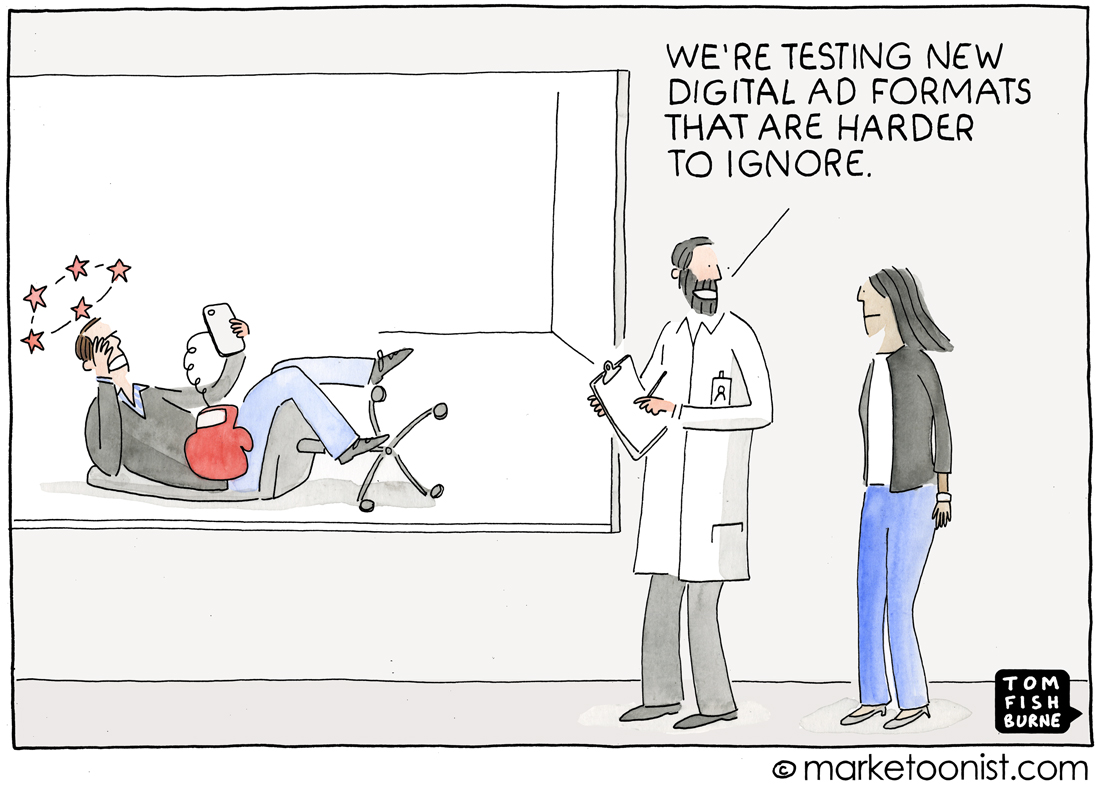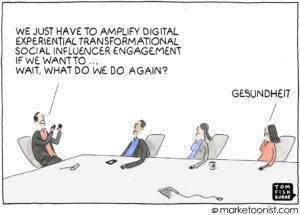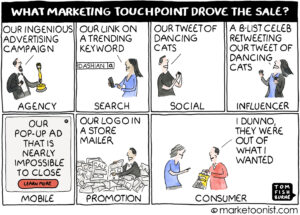The New York Times ran an article last week on digital ad formats that are technologically designed to be annoying:
“Ads pop up and play automatically, daring readers to shut them down with feats of fine motor control. The ads commandeer the screen. They expand and contract. They cover the text and refuse to budge.
“And then there is the dreaded X — the one that invites you to close the ad yet seems impervious to repeated clicks of the cursor or the jabs and thrusts of even the most powerful fingers. (Perhaps you have tried a hammer?)
“Sometimes the ads dance and move across the screen, forcing the user into a hot pursuit of the X.”
The article includes a pretty funny field guide to annoying ad formats, including The Fickle Floater, The Belligerent Blockade, The Brash Bulldozer, and the Vexing Video.
All of these formats and more are leading to the rise of ad blockers that I wrote about a couple months ago. Around that time, the IAB announced new advertising principles called L.E.A.N. (Light, Encripted, Ad choice supported, Non-invasive ads) to try to address advertisers’ role in driving people to use ad blockers. But, as Todd B commented, several of the news sites that wrote about L.E.A.N. were crammed with the same sort of annoying ad formats that L.E.A.N. is trying to address.
Ad land is furiously working to counter the threat posed by ad blockers. But much of the energy is going toward blocking ad blockers rather than address the root cause of bad user experience. Yahoo Mail even blocked users who had ad blockers installed from using their own inboxes.
Yet 10% of people who work in advertising use ad blockers themselves.
I like how Belgian advertising agency Boondoggle used that insight in their recruitment. They ran a recruitment campaign on advertising news sites that explicitly targeted people who use ad blockers (using an ad-blocker-detecting plugin). The messaging read:
“You block ads, even if you work in advertising? Then maybe you’re the person we’re looking for. Join us and let’s create campaigns that are really useful to people.”
I think that’s the mindset that will eventually lead to a viable future for digital advertising. Advertisers have to remember to think like the people they’re trying to reach.



Chuck says
Right on the money, I don’t mind ads if they impart useful information or may be entertaining, but when I have no interest in the service or item being pushed at me, give me a way to move on and I would dump my ad blocker. When someone(s) fill the right column with ads that are downloading and bringing my browser to a crawl, then it is time to cut them off.
Connie says
Do you watch South Park? Their latest season arc has been about ads and how they are evolving and is quite funny.
In all seriousness, the prevalence and use of ads has skyrocketed, and there’s nothing out there that says they do anything other than annoy people. In some cases, it just looks cheap – I mean, Microsoft forcing people to sit through ads in Windows 10 just to play solitaire? Really?
There’s a lot of ways to get people to support a site w/o annoying ads and without blocking people who use ad blockers. I’m particularly appreciative of the Guardian newspaper, which unobtrusively asks me if I want to support them in a different way since I’m blocking the ads. That’s smart marketing and gives them a friendly and cool vibe rather than money-grubbing or cheap.